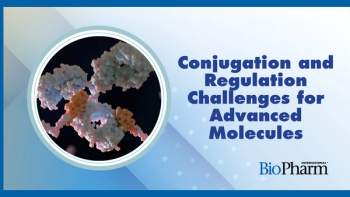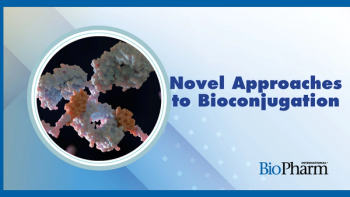
- BioPharm International-09-01-2020
- Volume 33
- Issue 9
Risky Business: Assessing Protein Aggregation Grows Increasingly Challenging
Current and newer biologic modalities pose increasingly complex challenges to the detection and characterization of protein aggregates.
Protein aggregation is a particular challenge for biologic drug makers because this can occur at any point in the development or manufacturing process as well as during packaging and storage. Protein aggregates, typically impurities or molecular variants of the therapeutic protein, can change the therapeutic effect of the drug or cause protein degradation. This degradation can have serious implications for patient safety, product stability, potency, and biological activity, among other adverse consequences. Dealing with protein aggregation involves using analytical methods to detect and characterize the aggregates.
Defining the problem
Fundamentally, protein aggregation occurs when proteins in their native state combine and aggregate or “clump” together in what is often a non-reversible process. This aggregation can occur either both inter- or intra-cellularly, caused by a change in the native structure of the protein. “The native structure is the most stable form of the protein, which essentially involves folding of the structure such that any hydrophobic regions are contained in the inner portion of the protein and hydrophilic on the exterior,” says Ashleigh Wake, business development director, Intertek Pharmaceutical Services, who explains that native structures are stabilized through a combination of disulfide bonds (formed between two cysteine residues) and non-covalent interactions, such as Van der Waals. “There are numerous ways in which these non-covalent interactions can be disturbed, which causes the protein to misfold or unfold, which ultimately leads to protein aggregations,” Wake states.
The formation of protein aggregates is attributed several main factors, including mutations in either DNA coding or other cellular proteins that are responsible for protein synthesis; variants in amino acid sequences or incorrect sequences that can occur when there is a problem with the translation of messenger RNA (mRNA); and aging of the cellular matrix. This reduces the ability of the matrix to refold protein or break down aggregated regions, according to Wake.
In addition, external factors play a role in protein aggregation, such as the protein being exposed to extremes of heat, pH, or oxidative conditions, says Wake.
Therapeutic proteins, however, require a specific structure for maximum functionality and activity, Jon S. Kauffman, PhD, vice-president, Biopharma Biologics, Eurofins Lancaster Laboratories interjects. “Aggregates can be introduced at any step of the process from production to dosing and can cause variability in potency, safety, and efficacy. Therefore, a thorough understanding of aggregation is critical to the success of biopharmaceutical drug candidates,” Kauffman says.
The mechanism by which aggregation increases immunogenicity is subject to considerable current research, but the inherent resultant particle size is certainly one factor that can be considered in this respect, Wake says.
Because protein therapeutics are administered to patients in the form of liquid injections as intravenous (IV), intramuscular (IM), or subcutaneous (SC), they often require high concentrations of proteins, thus making the formulation prone to aggregation. When a protein therapeutic aggregates in the blood stream, it has been shown to invoke immune response, which can result in the patient becoming immune to the monomer molecule, Kauffman elucidates. “The immune response is associated with adverse clinical effects, such as neutralizing the antibody, which inhibits efficacy of the products or causes cross-reactivity and neutralizes an endogenous protein counterpart. This may cause severe hypersensitivity response, such as anaphylaxis. Therefore, ensuring stability of the native molecule and minimizing the formation of higher molecular weight species is vital in reduction of immunogenicity of protein therapeutics,” Kauffman states.
Protein aggregation can potentially occur at almost every stage of a biopharmaceutical process—including development, formulation, and manufacturing—making it critical to have insights for guiding robust processing strategies, adds Lisa J. Graham, PhD, vice-president, Analytics Engineering, Seeq, a Seattle, WA-based software company that specializes in advanced analytics for process manufacturing data. These insights come from combining robust analytical instrument technology, process information with batch context, and advanced analytics to support collaboration, knowledge capture, and workflows, Graham notes.
Detection and characterization
Characterizing protein aggregates is as important as detecting them. Complete characterization of aggregates requires various pieces of critical information, Kauffman notes. It is key to know at what concentration protein aggregates form, the distribution of aggregate size and the change of aggregation percent and size of aggregates with time and concentration, Kauffman says.
“Particle sizing methods are increasingly being utilized to measure polydispersity and size distribution of the candidates,” Kauffman says. Dynamic light scattering (DLS), analytical size exclusion chromatography (SEC), sedimentation velocity analytical ultracentrifugation (SV–AUC), and transmission electron microscopy (TEM) are some of the analytical methods employed to detect and characterize protein aggregates.
DLS is a non-invasive method typically utilized to measure particle size and distribution. Because it is non-invasive, sample can be recovered at the end of the experiment. DLS can measure a broad range of sample sizes ranging from nanometers to micrometers and allows for fast data acquisition, reproducibility, and high sensitivity, Kauffman states, adding that DLS provides a good starting point to identify the presence of aggregation. The quantification of mass of individual aggregated species can be a limitation with DLS, however.
Analytical SEC is a form of high-performance liquid chromatography (HPLC) that is used to analyze the aggregation state of the sample. SEC uses differing Stokes’ radii to separate various species in a porous stationary phase column, Kauffman explains. “Smaller monomeric species are retained for a longer period in the stationary phase compared to larger aggregated molecules. Retention time of the sample can be compared with the retention of a known protein standard to calculate the molecular weight,” he states.
SEC is limited, however, by the assumption that the sample has the same conformation as the molecular standard and the sample is inert to the stationary phase, Kauffman continues. Furthermore, the effect of dilution while the sample is flowing through the column must be considered, he adds. Multiple angle light scattering (MALS) coupled with SEC (SEC–MALS) is a preferred analytical technique used to calculate the absolute molecular weight of the aggregate. SEC-MALS is effective in evaluating the effect of time and solvent size distribution of the aggregate, says Kauffman.
Meanwhile, the use of SV–AUC to characterize the size-distribution of aggregates has gained popularity in the last decade, Kauffman emphasizes. “Although, SV–AUC was developed in the early twentieth century, the lack of analytical solution to Lamm’s equation limited its application. Samples can be analyzed in their near native condition (buffer and pH) with no interaction with an analytical column like the other methods discussed. Additionally, the allowed range of concentration that can be tested is wider when compared to other methods,” Kauffman says.
He goes on to explain that TEM is a direct method to visualize the size, shape, curvature, and aggregation state of the protein formulation. The short wavelength of an electron allows for a significantly higher image resolution to be obtained using TEM as compared to other techniques. TEM can provide large size ranges from nanometers to millimeters, but it is limited in its scope of quantitatively evaluating the size distribution of the candidate. “Depending on the case, automated particle detection and size measuring codes need to be written and tested. Additionally, experiments are performed at very low concentration, which might not reflect the true state of the sample. Furthermore, negative staining and freezing also make the visualization condition far from the native condition,” says Kauffman.
Graham agrees that protein aggregation can be detected in several ways, whether visually observed in the solution, detected in the void-volume using SEC, and/or detected using DLS.
“In addition to characterizing the extent of aggregate formation, it is important to understand the conditions under which protein aggregation occurs. Having insight into the aggregation mechanisms and developing mitigating strategies are crucial to ensure the safety and clinical efficacy of the drug product,” she states.
For example, Graham points out, proteins are extremely sensitive to solution conditions and temperature, which are key process variables to consider when trying to gain insight from the aggregation data provided by analytical instruments. “From a process perspective, having an analytics strategy that looks at aggregation data, in context of the physical operation of the system, provides the opportunity to gain insight into the specific process conditions leading to aggregate formation. The occurrence of protein aggregation must be controlled throughout the manufacturing process during bioprocessing, with greater emphasis on purification, formulation, and fill/finish steps, to optimize yield and achieve target quality, while lowering production costs,” she adds.
Characterization of aggregates is potentially one of the key quality attributes to both measure and control, says Wake, who explains that any amount of aggregation, because it has the potential to increase immunogenicity, is therefore critical during quality control. Determining the amounts and sizes of aggregates formed, such that these can be compared to specification limits established during safety studies, can help ensure the continued efficacy and safety of the product, Wake emphasizes.
“More so during product registration, it is critical to establish that the levels of aggregates will remain within this specification through the product lifecycle. This is where formulation of the products plays a key role in stabilization, finding the optimal environment based on, for example, salt/excipient level or pH, to control aggregation,” Wake states.
The methods Wake describes for detecting soluble aggregates include analytical ultracentrifugation (AUC), asymmetrical fast field flow fractionation (FFF or AF4), sodium dodecyl sulfate electrophoresis, microscopy and turbidity in addition to SEC and DLS. “For evaluating secondary or tertiary structural changes, which can be complicit in aggregation this list also includes circular dichroism, Fourier-transform infrared spectroscopy, differential scanning calorimetry, and fluorescence,” she adds.
“For non-soluble aggregates, sub-visible particle or visible particle analysis techniques, such as light obscuration or flow imaging, can be applied. In any characterization, stability, or quality control program it is typical that orthogonal methods be applied to monitor aggregation considering both soluble and non-soluble forms. These methods often complement one another to ensure a comprehensive assessment,” Wake says.
Challenge of new modalities
New biologic modalities also pose further challenges to protein aggregate detection and characterization. Graham stresses that protein drug product formulation from varying biologic modalities often outpace monitoring technologies and analytical method development. She also points out that demand is increasing for multi-purpose facilities, not just multi-product facilities, to meet changing market demands for these newer modalities. “As a result, there is a need for an agile approach to continually adapt the evolving analytical methods in concert with the changing manufacturing processes. Coupling these components together into a robust data analytics environment makes it possible to capture the holistic understanding of the process environment necessary for an agile manufacturing strategy,” Graham states.
For example, Graham notes, “advanced analytics used to examine plant time-series data is foundational to developing process understanding, creating models, and developing control strategies to support the delivery of data-based decisions and process improvements. These analytical strategies can be used to create insights from the data supplied by instruments and analyzers to improve the manufacturing process.”
“The challenges for newer modalities are in many ways not that different from those for standard biologics and, where additional complexity does exist, it is more likely the result of the influence of the modality’s biochemistry,” chimes in Wake. “In the case of antibody drug conjugates (ADCs), for example, the inclusion of the linker or drug can increase hydrophobicity given the conjugated molecule a greater tendency to aggregate.”
In terms of detection and characterization, however, challenges with all aggregation analysis often involve ensuring that the system or systems are sensitive enough in terms of traditional limit of quantitation (LOQ) as well as size range, Wake continues. Other challenges include the notion that the analytics are not affected by the components of formulation, or the process of analysis is not inducing the aggregation that is being measured.
“SEC, for example, is perhaps the most widely used technique for assessment of aggregation with many benefits, such as ease of use and the ability, through use of external standards or MALS detection, to predict molecular weight of each observed species. Adversely the process of separation can induce aggregation, and its application is limited only to the assessment of soluble aggregates over a specified mass range, that is, large soluble aggregates can elute outside the size exclusion range and has limited resolution,” Wake says.
As the complexity of modalities increase, these challenges increase, such as, for example, in ensuring that the system can achieve the required LOQ or resolve aggregates of similar overall mass. “The best approach in all instances, therefore, is to include orthogonal assessment,” Wake emphasizes. “For example, adding an AUC assessment alongside SEC can help confirm that the process of separation is not causing aggregation and that the mass range being assessed is fully inclusive.”
A modality such as ADCs tend to have aggregation issues, notes Kauffman, who explains that these issues stem from the fact that some of the payloads employed in ADCs are highly hydrophobic and increase the potential for aggregation. “The analytical procedures need to be robust and specific enough to handle the more complex structure since ADCs are composed of monoclonal antibodies, a wide range of linkers, and payloads that are typically highly cytotoxic,” Kauffman states.
Meanwhile, there are a significant number of advanced therapy medicinal products (ATMPs) in the pipeline, Kauffman also stresses. Many of these ATMP candidates use a viral vector, such as an adeno-associated virus (AAV) or lentivirus to deliver RNA/DNA to its target. “By nature, the outer coat or capsid of these viruses is made up essentially of protein aggregates. Therefore, many of the analytical techniques discussed here are also used to study higher order structure of these gene therapy products,” Kauffman says.
Analytical innovation
With the growing challenges posed by new biologic modalities, there is a need for further advancement in analytical techniques or methods to improve aggregate detection and characterization. The ultimate aggregation tool, for example, would potentially allow highly sensitive and reproducible quantitative and qualitative assessment of soluble and insoluble aggregates in a single analysis without pre-treatment of the sample, that is, direct analysis of the drug substance or drug product, Wake highlights. This poses a considerable task, however, given the diversity of potential aggregates.
“There are, however, numerous new technologies under evaluation that aim to introduce additional orthogonal approaches, overcoming some limitations of current approaches and importantly improvements to existing technology,” Wake says. “Several new approaches have been reported in recent years, including differential mass analysis, which can be applied to low concentration proteins to provide data on mass as well as re-application of existing analytical technology, such as surface plasmon resonance and flow cytometry. These have not typically been associated with aggregation analysis.”
In terms of existing approaches, in the meantime, improvements in software for AUC and AF4 analysis continue to make these options much more viable for routine quality control applications, Wake adds.
“The techniques described [DLS, SEC, SV–AUC, TEM, etc.] can be quite complex and require a high degree of expertise,” Kauffman interjects. “Advances will need to be made to the software required to perform data acquisition and analysis so that they can be more widely used. Further, the software must be developed to be Part 11 (1) compliant should the technique be required for stability and/or release testing of clinical and commercial material.”
Graham adds that innovations in analytical instrument technology are needed to drive faster, more accurate measurement of protein aggregation. Advanced analytics are also needed that put data into the hands of process engineers and scientists. “These subject matter experts are invaluable for getting the insights needed at the pace required to keep up with the operational demands,” Graham states.
Furthermore, Graham makes the case that subject matter experts use experience based on what they have seen in the past and weigh that against what the data says to further apply critical knowledge and intuition. This balanced strategy creates a vital collaboration between human and machine, Graham emphasizes.
To achieve connectivity, innovations in advanced analytics need to address sevaral issues, including data connectivity and access, where time series and contextual data are typically stored in disparate sources. Access to all potential data sources must be provided while complying with data governance regulations and practices, Graham notes.
Advanced analytics must also address the need for iterative and agile processes. Production optimization is an iterative process, for example, so advanced analytics must be able to support fluidity in organizational priorities and context, rather than delivering a one-time snapshot of operational status. Further, advanced analytics must support organizational goals, such as providing easy-access (and enough) data, quickly generating insights, and enabling data-based decision making, though this does not always equal execution, Graham highlights. She adds that leadership and employee objectives must support a move to an analytics-centric culture.
Thus, while a variety of current analytical methods can be used for protein aggregation detection and characterization, changing market needs require innovative approaches and strategies to provide meaningful data and analysis for better quality control.
Reference
1. FDA,
Article Details
BioPharm International
Vol. 33, No. 9
September 2020
Pages: 35–39
Citation
When referring to this article, please cite is as F. Mirasol, “Risky Business: Assessing Protein Aggregation Grows Increasingly Challenging,” BioPharm International 33 (9) 2020.
Articles in this issue
over 5 years ago
Preparing Pandemic Vaccine Capacityover 5 years ago
Proposing a New Method of Detecting Pinholes in Single-Useover 5 years ago
Strategizing for Rapid Changeovers in Biologics Manufacturingover 5 years ago
Pharmacopoeia Compliance: A Practical Guideover 5 years ago
Cellular and Gene Therapies Face a Manufacturing Capacity Crunchover 5 years ago
Surge in Cellular and Gene Therapies Challenges FDAover 5 years ago
Biopharma Gears Up Pandemic ResponseNewsletter
Stay at the forefront of biopharmaceutical innovation—subscribe to BioPharm International for expert insights on drug development, manufacturing, compliance, and more.




